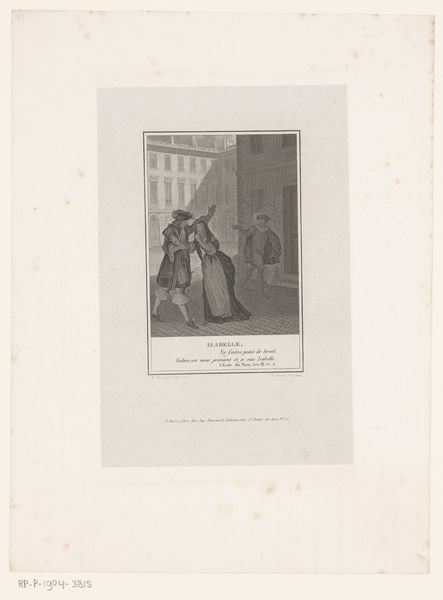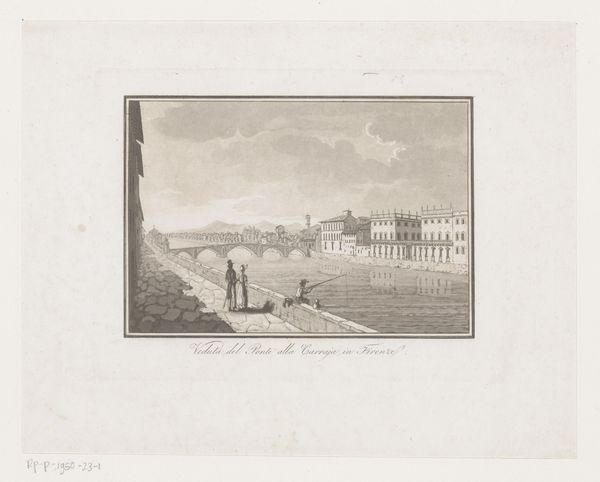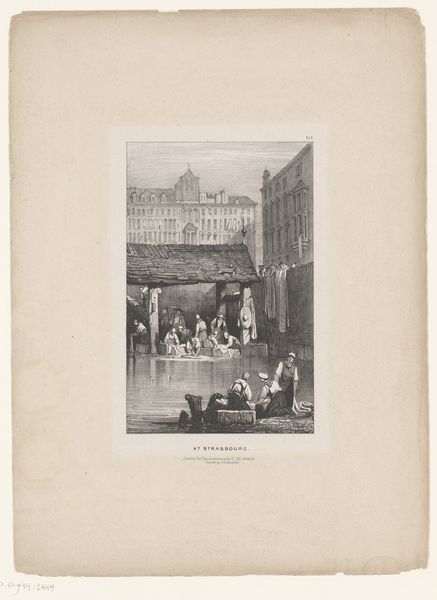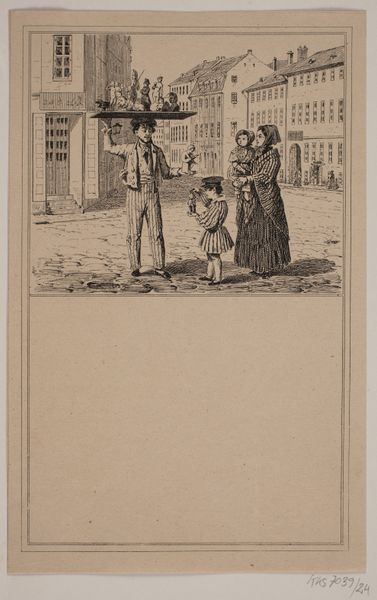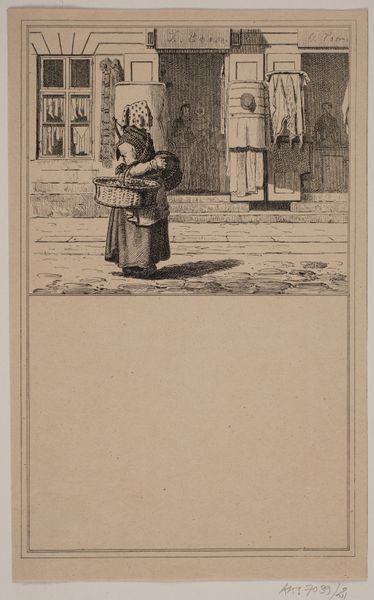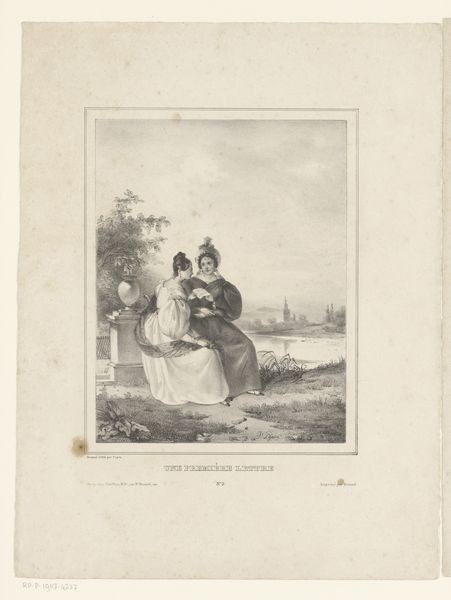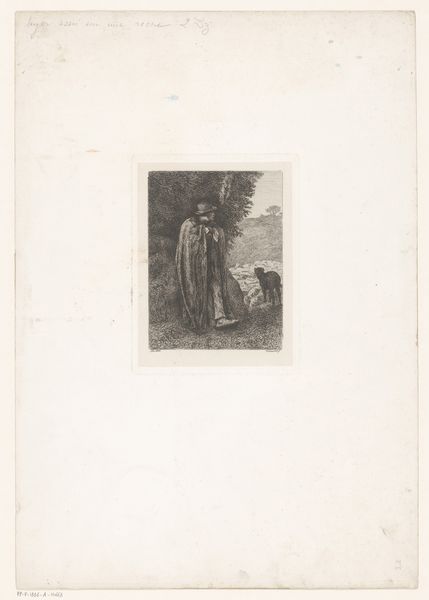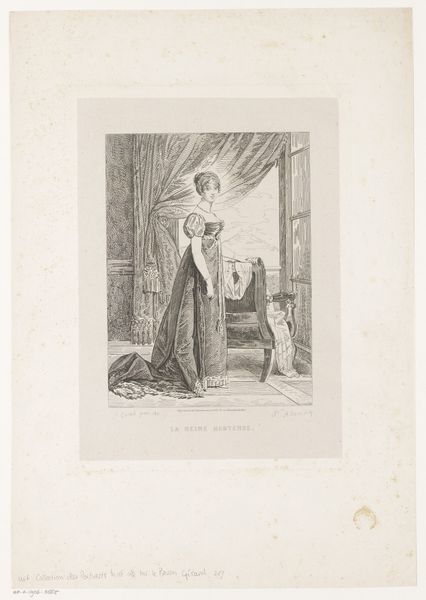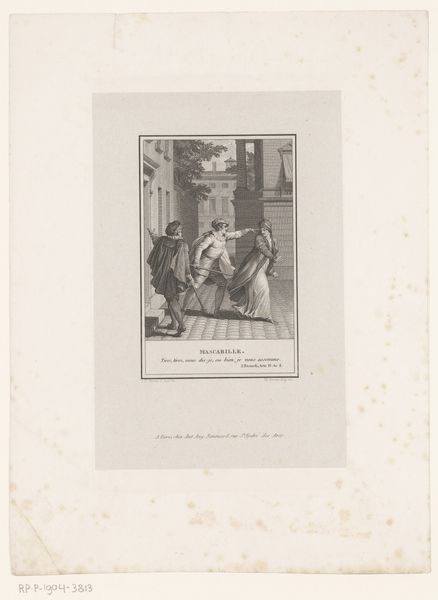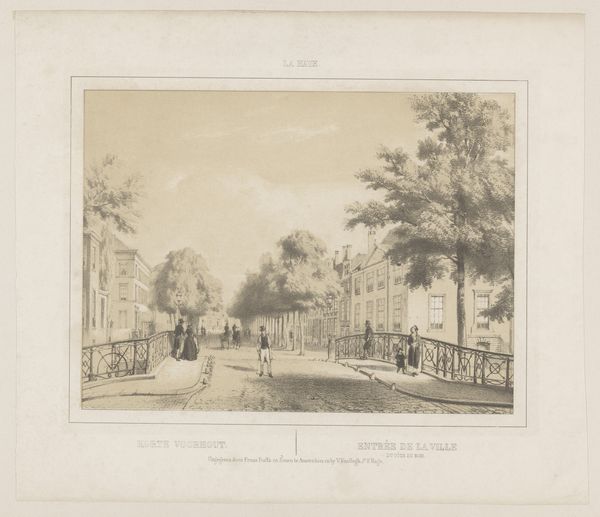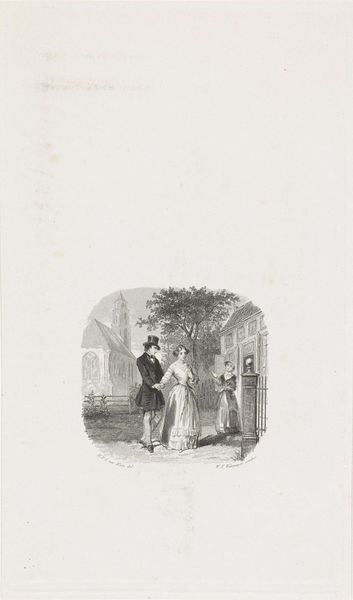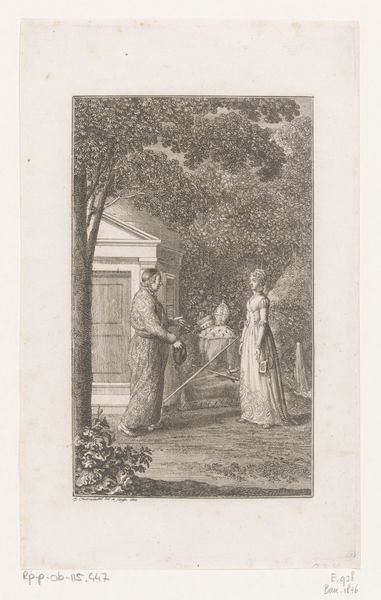
Vægteren. Prøvetryk til Chr. Winther og M. Rørbye, "25 Billeder for små børn" 1846
0:00
0:00
drawing, lithograph, print, paper
#
drawing
#
lithograph
# print
#
paper
#
romanticism
#
cityscape
Dimensions: 270 mm (height) x 175 mm (width) (brutto)
Editor: Here we have Adolph Kittendorff's 1846 lithograph, a trial print called "Vægteren," which translates to "The Watchman." It's delicate, with fine lines depicting a cityscape, a statue, a watchman and his dog. It feels so ordinary and candid, somehow… What catches your eye about this particular print? Curator: The most compelling aspect is the work's creation as a lithograph – a process intrinsically tied to mass production and dissemination. Its designation as a "trial print" reveals a fascinating tension. While ostensibly intended for a children's book, the medium suggests a reach extending beyond the elite. Consider how the labor of creating this image, from drawing on the stone to the printing process, connects it to broader social strata beyond just the immediate consumption of art for children. What kind of material and intellectual work went into making this image reproducible, portable, and saleable? Editor: So, even though it was made for a children's book, you're more interested in the actual printing process itself? Curator: Exactly. This work, like any print, represents an attempt to democratize image consumption through industrialized creation, however quaint it may look to our contemporary eyes. The very notion of using lithography—a somewhat revolutionary medium at the time—to educate young minds opens avenues of questioning the social and political motivations behind mass producing images and books in mid-19th century Denmark. The print straddles boundaries of high art and the utilitarian object, and children's media is no exception. Editor: I see. So you're suggesting we shouldn't just see it as a simple illustration, but as a product of a specific mode of artistic production and distribution? Curator: Precisely. Looking closely at the "how" reveals far more than the "what" here. Understanding the materials and the modes of production gives insight into its societal function at the time. Editor: That’s a new perspective for me! Thanks for showing how materiality can change our perception.
Comments
No comments
Be the first to comment and join the conversation on the ultimate creative platform.

